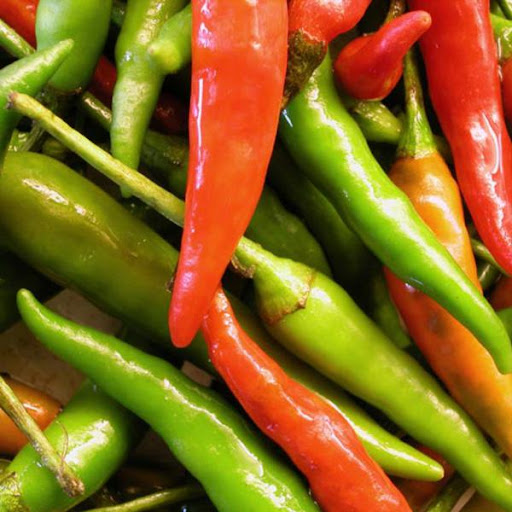Wednesday, February 9, 2011
Indonesians fired up by soaring chili prices
 In spice-crazed Indonesia, a meal without fresh chilies is almost unthinkable.
In spice-crazed Indonesia, a meal without fresh chilies is almost unthinkable.
But prices have soared as much as 10-fold in recent months - some say because of climate change - driving up inflation and pulling everyone from housewives to the president into the debate.
Grow your own, some say. Or what about using bottled hot sauces instead?
With unusually heavy rainfalls decimating crops, the country's most popular ingredient is hovering at between $10 to $11 per kilogram - making it more expensive than beef.
That's put a serious dent in wallets - many people in this nation of 237 million earn less than $200 a month - but few are willing to cut back.
"Food is tasteless without sambal!" said Nining, a mother of three, referring to the fiery condiment made of the green and red "lombok" chilies.
"My kids won't eat a thing without it!"
Rising global temperatures and wild shifts in weather are hurting palates elsewhere.
In India, not only has there been a drop in tea production but growers point, also, to subtle, unwelcome changes in the flavor of their brews. In wine-loving France, it's grapes that are suffering. And in South Korea, where torrential rains have ruined cabbage crops, it's kimchi.
But the concern of governments - especially in developing countries where food prices account for a bigger portion of the CPI basket - is the effect such hikes have on inflation.
In Indonesia, the consumer price index rose nearly 7 percent in December, the highest in 20 months and nearly 1 percentage point above the government's target, largely because of higher food prices - chili topping the list.
The ministers of agriculture and trade responded by asking consumers to lay off the hot peppers for awhile or to simply shift to bottled sauces.
But President Susilo Bambang Yudhoyono had his own idea: Plant them in your own garden.
For now, food stall vendors in the bustling capital, Jakarta, say they just have to accept a drop in profits.
"All I can do now is be patient, I guess," said Marliani, serving up a plate of rice with a boiled egg, chili and a handful of fried beans for which she charges 50 cents.
"I can't raise prices, or I'll lose my customers."
Though she earns up to 30 percent less than she did several months ago, doing away with sambal seems unthinkable.
And rather than close up shop and head back to her village in Central Java province, she's resigned to waiting for better days.
At the peak of its price in December, the red and green chili peppers, or "cabai rawit," jumped nearly 600 percent from $2.20 per kilogram to $15, creating panic nationwide.
For several days in January, the price soared 10-fold to $22.20 per kilogram.
Some farmers took to guarding their crops from chili robbers with machetes.
Agus Suherman, chief of Jakarta's statistical board, predicted that if chili prices continue to stay high, inflation will keep rising through the early part of 2011.
Though prices have eased in recent weeks, chilies still cost three times what they did one year ago, even though some imports from China and Thailand have recently found their way into local markets.
(Source: http://www.thejakartapost.com/news/2011/02/10/indonesians-fired-soaring-chili-prices.html)

This post was written by: HaMienHoang (admin)
Click on PayPal buttons below to donate money to HaMienHoang:
Follow HaMienHoang on Twitter













0 Responses to “Indonesians fired up by soaring chili prices”
Post a Comment